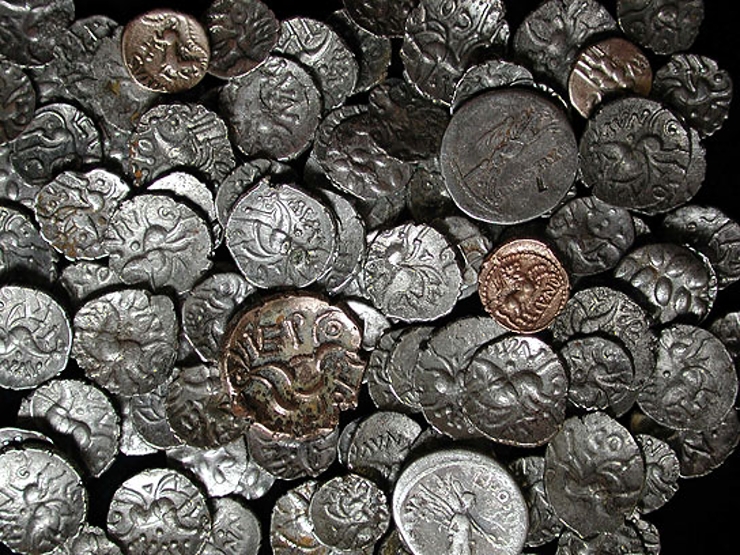Nádhera!!!!!!! 
28.4.2000 Hallaton Treasure - 5000 coins and a beautiful military helmet
Categories: Calendar
In the year 2000, the village of Hallaton in Leicestershire made a significant contribution to the history of Great Britain. There, prospector and metal detectorist Ken Wallace discovered Britain's largest Iron Age depot. The hoard included 5,000 coins and a gold-plated military helmet.
Wallace went on the prospecting walk with his friends. At first, it looked like he'd only found a few pottery shards. But the metal detector went on to signal that something much rarer was underground. The prospector called archaeologists to the site, who tracked down an incredible 5,000 coins.
But that's not all. The archaeologists also unearthed a gold-plated silver military cavalry helmet and a silver cup, probably dating from around 50 AD. Over 300 pig skeletons were also found near the hoard. These were most likely sacrifices to the gods.
The depot really attracted a lot of attention when experts found a silver denarius with the goddess Roma on one side and Castor and Polux on horseback on the other in a pile of coins. The coin dates back to 211 BC, and to this day it has not been fully explained how the penny came to Hallaton in the first place.
The village, in fact the whole county, is quite a long way from the coast from which the Romans reached Great Britain. However, according to the find, the area in question probably had quite rich trade relations with the Romans.
The Hallaton Hoard is housed in the museum at Harborough. One of the most interesting finds, apart from the aforementioned coin, is undoubtedly the aforementioned helmet, which has undergone a conservation process. It took nine years and in 2012 the helmet was exhibited in the same museum as other parts of the depot. It was later announced that the skeleton of the dog that was found with the treasure would also be displayed in the museum. According to experts, the animal was apparently sacrificed to protect the treasure.
Hallaton was also mentioned ten years ago when an old silver ring was found in the same area. It's unique because it's engraved with "TOT". This is probably a reference to the Roman god Marthas, who was the god of war and agriculture. He was the second most important and revered god after Jove.
Sources: www.rozhlas.cz, www.harboroughmuseum.org.uk, www.wikipedia.org, www.bbc.com



The article is included in categories:



